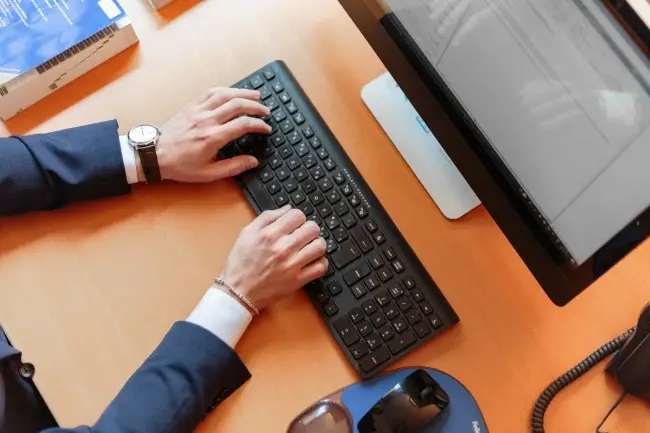Best ways to fix error loading operating system issue on windows will be described in this article. If the device is not properly setup, trying to boot into an OS from an installation or bootable media frequently results in the “Error loading operating system” error. However, occasionally you could also have the problem when trying to boot your internal disk’s operating system.
Remaking the bootable disc or checking for corrupt boot files on your system should typically fix the problem. However, depending on your situation, extra techniques can also be required.
Causes of the Error Loading Operating System Issue on Windows
Here are some probable reasons why Windows may experience “Error loading operating system”:
- Incorrect BIOS configuration
- Incorrectly made bootable or installation disc
- Corrupt sectors or problems in the storage medium
- Corrupt boot or system files
- Outdated BIOS
How to fix Error Loading Operating system Issue on Windows?
Before you start, unplug any additional USB devices and, if necessary, a CD or DVD, and restart your computer. Apply the potential solutions we have listed below if you are still having trouble.
Check BIOS Configuration
You should first check your BIOS to verify if the computer is detecting your hard disc or USB drive. Additionally, ensure sure the device you are attempting to boot from is listed first in the boot priority order by checking it.
On the basis of your device, the procedure varies. But we’ve listed the fundamental actions below. We advise visiting the official website to find the right procedures if you run into any problems. This is another way to fix error loading operating system. Also check window 10 update error 0x80003ee
Detecting Device
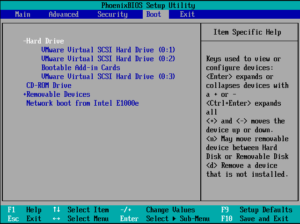
- To boot into BIOS, turn on or continue your computer and press the BIOS key. To achieve the proper timing, you might need to hit the key more than once.
- Look for a SATA drive or m.2 SSD if you are attempting to boot from the internal disc. The Main, Storage, or Advanced tabs are typically where you may locate them.
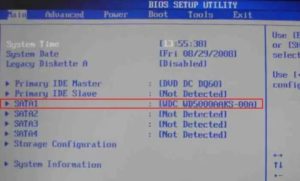
- Check the Advanced or Peripheral tabs to see if the external media you’re trying to boot from is there.
- If the BIOS recognises the drive, the SATA/SSD or USB options ought to display the drive name. You will see None if not.
You must examine the connections to those devices and make sure everything is in demand if the BIOS cannot identify them. You may also see if they work by connecting them to different PCs. If not, your only choice is to get a new gadget. This is another way to fix error loading operating system.
Setting Boot Priority
- Access the BIOS.
- Select Boot Order/Priority settings from the Boot or comparable tab.
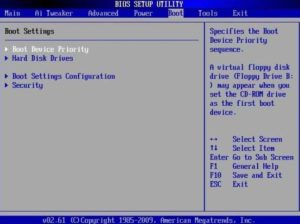
- Rank the item you must boot from first on the list. The directions to do so are typically visible on the side.
Properly Recreate Bootable Drive
A bootable or installation drive that was wrongly made is usually to blame for the problem. A USB flash drive cannot be turned into an installation drive by simply placing an ISO file on it. There are specific steps you must do. Additionally, sometimes even the right approach you take can fail. In these situations, you can attempt other approaches.
- Windows media creation enables the development of a Windows USB installation disc. Using the Windows To Go function, you can even make a bootable Windows hard drive.
- If you used Rufus or UNetbootin to create a bootable or installation disc, you can try the other app (UNetbootin if you previously used Rufus, and vice versa) to see if it still functions. Use other applications like Etcher, PowerISO, etc. in a similar manner.
The Boot Camp Assistant programme for Mac can be used to generate a USB installation disc. Other than Macs, they might not function properly on PCs. To generate the installation or bootable disc, utilise a Windows PC or programmes like etcher. This is another way to fix error loading operating system. Also check disable Google Trends on PC and Mobile devices
- On the disc, you need also use the correct file format (FAT32 for 32 GB or lower and exFAT for higher)
On a Windows computer, follow the steps listed below to create a bootable drive using the built-in method:
- Connect a USB flash drive to your computer, or any other storage device you like.
- To open this command line, select Run and type diskpart.
- Type the following instructions:
Pick disc # (replace # with the number from above) o list disc (verify the disc number for the external drive)
Purify o convert mbr
Build primary partition, choose partition 1, and format quickly with fs=fat32 (use exFAT for a hard drive greater than 32 GB size)
Active \so exit
- After that, download the operating system’s.iso file and extract its contents to the USB drive. To do this, double-click the file to mount it as a virtual drive and then copy the contents to your USB storage device.
- As an alternative, you can extract the contents using third-party programmes like 7z or WinRAR.
Run Startup Repair
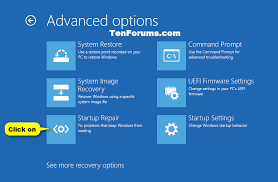
System files required for the boot process can be replaced using the Startup Repair feature in Windows. So, in the event that such problems are to blame for the error, consider running this utility. 1. Force your computer to shut down three times in a row to do this. To force the PC to shut down and to restart it before the next shutdown, you must press and hold the power button for a few seconds. This is another way to fix error loading operating system.
- After the fourth restart, a different screen loads on the PC. Choose Advanced options here.
- Next, select Startup Repair under Troubleshoot > Advanced options.
The aforementioned actions launch your computer’s built-in startup repair programme. If using this utility doesn’t work, you must run the repair using a Windows installation or recovery disc.
- Make a USB flash drive for installation or recovery purposes and boot from it.
- Select your language preferences and press Next.
- To access the Advanced options, click Repair your machine on the Install screen.
- Click on Startup Repair under Troubleshoot > Advanced options.
Restart your computer after running the startup repair. See whether the problem goes away by trying to boot from the media (your system disc or an external drive) where you encountered the error.
Check Disk for Errors
The disc should then be checked for any faults as the next step. If you want to boot from an external disc or the operating system that came with your computer, you must take these steps. Here’s how to go about it:
- Use installation media to access the Recovery Environment or Advanced Startup settings.
- Select Command Prompt under Troubleshoot > Advanced options.
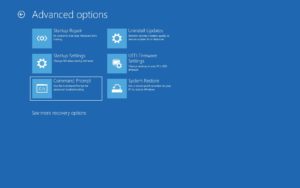
- Type the following commands:
list volume (take note of the OS partition’s drive letter, Ltr)
Chkdsk/r/x C (Substitute the drive letter you indicated for C.)
- To close the Command Prompt, type the command exit.
Check if you can load the Operating System this time after restarting your machine. This is another way to fix error loading operating system.
Rebuild BCD
If your boot files have any problems, the operating system won’t load correctly. To fix the problem in this scenario, you must rebuild the Boot Configuration Data (BCD). Also check fix update errors
Here’s how to go about it:
- Use installation media to access the Recovery Environment or Advanced Startup settings.
- Select Command Prompt under Troubleshoot > Advanced options.
- Next, depending on your BIOS mode, input the commands listed below (legacy or UEFI)
For older BIOS (Older)
- exit; bootrec /FixMbr
- Bootrec /FixBoot
- Bootrec /ScanOs
- bootrec /RebuildBcd
- exit
For UEFI BIOS (NEWER)
- Bootrec /ScanOS
- Bootrec /RebuildBcd
Restart your computer after executing these commands to see if your problem has been fixed. If it doesn’t, proceed with the preceding instructions to open the recovery Command Prompt, then take the following actions to manually rebuild the BCD (for UEFI BIOS):
- Type the commands listed below to give the EFI partition a drive letter:
Diskpart
Disc o list (note the disc number you need)
Choose disc # (substitute the above number for #)
Look for the volume number of the EFI partition on the o list volume (FAT32 file system and Info should show System). This is another way to fix error loading operating system.
Choose volume # (change # as necessary)
inputting letter=X: (You can replace X with any unused drive letter)
exit
- Use the following command to boot Windows 10 (version 1709 or newer): bcdboot C:Windows /s X: /f UEFI
Make sure to modify X: to the correct letter if you did. If the internal disk’s Boot volume has a different partition letter than C:, change it as well (see in list volume)
- If not, type the command shown below to switch to the boot directory:
C:EFIMicrosoftBootcd /d
Here, X: can be changed if necessary.
- One of the following commands needs to be entered if the directory is missing:
cd /d X:Boot and cd /d X:ESDWindowsEFIMicrosoftBoot
- Next, rebuild the BCD by using the commands shown below:
bootrec / fixboot
bcd -s -h -r o attrib
BCD BCD.backup o ren (you can set BCD.backup to any backup name you want)
Windows /l en-us /s X: /f ALL o bcdboot
- To close the Command Prompt, type the command exit.
If the problem persists, restart your computer and check.
Update BIOS
This problem can also arise if the OS disc has a huge volume but your BIOS is out-of-date, which causes problems while accessing the drive. Due to the old BIOS, there can potentially be more issues. In such circumstances, we advise BIOS update. This is another way to fix error loading operating system.
Check your BIOS version first, then compare it to the boot disk’s minimal requirements. 1. Go to the Command Prompt in the Recovery Environment and check your BIOS version.
- Enter the commands wmic bios get manufacturer, smbiosbiosversion.
If your BIOS doesn’t satisfy the requirements, you should update it. You run the danger of bricking your ROM if there are any errors throughout the process, so exercise caution.
Reset the PC or Reinstall Operating System
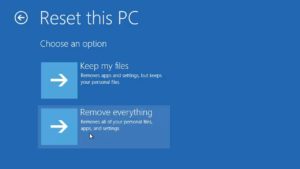
If none of the aforementioned approaches worked and you still had the problem with your standard OS, it’s possible that the software itself is broken or missing. In these scenarios, you must reset your computer. 1. Use an installation medium to access the Recovery Environment in order to do so. This is another way to fix error loading operating system.
- Choose Reset this PC under Troubleshoot.
- To reset your OS, follow the on-screen directions.
Your last resort is to reinstall Windows using the installation disc if a system reset is unable to fix the problem.

